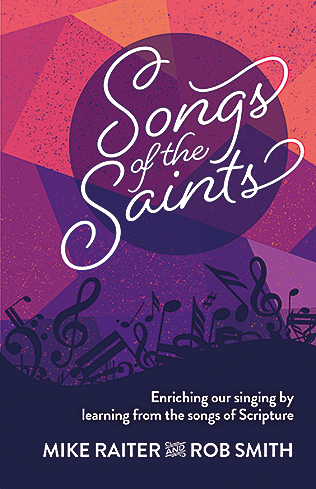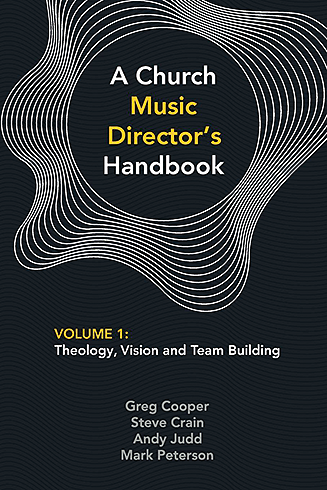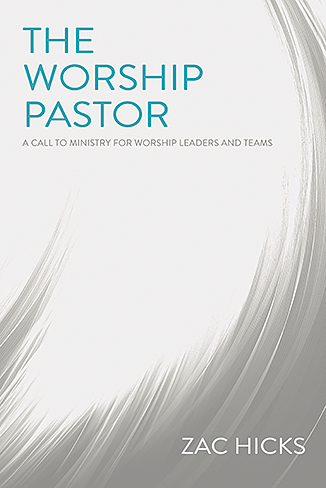Songs of the Saints by Mike Raiter and Rob Smith (Matthias Media) - Reviewed by Paul Kershaw
As a generation of contemporary church music leaders reach a certain point in their work and creative lives, the experiences gained and questions raised along the way are being unleashed in print to take stock of what’s happened since popular music forms entered churches several decades ago.
The result is a harvest of resources aimed at steering us forward on a God-honouring path with church music ministry.

Have people stopped singing?
The Mike Raiter and Rob Smith book Songs Of The Saints has a stated aim: a “call to revitalise congregational singing in our evangelical churches”, because “in too many churches people, by and large, are not singing” (p152). It’s a bold statement, but if true it needs to be addressed.
The discussion is creatively laid out using musical metaphors where related chapters are set within an opening overture, three movements and a finale. This approach communicates an intent to entertain the reader in a way that doesn’t detract from the gravity of the content nor disappoint. In the brief overture, Raiter and Smith remind us of the power of song in everyday life before laying out terms of reference for what follows, including a call for the church to recapture its musical heritage within the biblical directive.
Within the first two movements, we are taken on a journey through songs of Scripture where the authors deftly examine the circumstance and purpose of each song in the immediate context and a full biblical perspective. An early observation that “saved people sing” (p.33) might seem obvious, but as we are guided through the songs of Moses, Deborah, Hannah and the psalms, we are reminded that the who, how and why of our salvation is important information to include in our songs in order to overcome the declared “growth of biblical illiteracy” in the contemporary church.
Saved People Sing
Accordingly, there follows convincing argument that the songs of the Bible are not simply descriptive in biblical context, but prescriptive for the songs we ought to sing in our gatherings today. Building on this foundation, the discussion flows to the much-favoured Scriptures Eph 5:18-21, Col 3:15-17 and Rev 4-5 to expose common misunderstandings and present solid insight on the form and purpose of our singing together – which is established “in shadow under the old covenant” and then fulfilled “in glorious brightness under the new”.
Refocusing on the stated objective of the book, the third movement takes its cue from the first two and fleshes out practical implications with a discussion on motives for singing and a whole chapter devoted to the role of emotions. It is this chapter, and the emphasis on biblical literacy in song throughout the book, that make it stand out in its genre. It seems clear that the authors believe these two issues are paramount in addressing their objective.
In too many churches people, by and large, are not singing - Raiter & Smith
It is also refreshing to read throughout the book many references to the contributions made on this subject by church forefathers such as Martin Luther, Augustine of Hippo, Isaac Watts, Charles Wesley, C.S. Lewis and Charles Spurgeon – as if to connect our thinking with those who strived to preserve and faithfully hand down the gospel to us.
During a brief journey into Psalms midway through the book, it was comforting to see a question rightly asked: “Where are the modern songs of lament?” (p92). In contrast to the pleasure-centred view of singing in our culture, the authors state that, “singing is one of the ways in which God sustains us in... turmoil. One of the reasons he has given us song is because singing helps us process pain and awaken hope.” (p85) Wonderful counter-cultural insight!
While some of the ideas presented in this book are not new, Songs of the Saints is a cutting-edge work addressing an understated issue for the modern church. It is without doubt an essential read for anyone involved in music ministry and a recommended read for any Christian.
Not Just a Handbook
The reputation of the authors behind A Church Music Director's Handbook, Volume 1 promises much, and given that it’s about 20 years since I last saw a church music “handbook” (Trethewey/Milne, Matthias Media) and a revision is certainly due.
The authors’ contributions largely stay within their own chapters with Judd’s work predominating and providing bookends to the volume. It’s helpful when a book on a subtopic of Christian ministry first paints a big picture. Accordingly, Judd kicks off with a whistle-stop tour of the Bible, viewed through a lens of worship, scooping up jewels of information as he goes on what true worship might look like. Building on this, he examines not just how worship may take place today, but also how we perceive the role of worship in our lives. He concludes that our worship cannot save us, but it is our response to Jesus’ saving work – his death and resurrection.
Our worship cannot save us, but it is our response to Jesus’ saving work – his death and resurrection.
Judd’s language is quite hip without losing its clout.There are moments of brilliance, such as his application of John 4:23: addressing the debate on knowledge versus spirit in our singing, affirming that we must have both together because “they are the kind of worshippers the Father seeks”.
Cooper’s chapters on music team culture are born of significant experience and present a Christ-like approach to leadership in music ministry. Crain bravely ventures to discuss spiritual gifts, and by example he includes guitar playing, where it is used to “serve Jesus and his church in an other-person-centred way”.
Peterson’s contribution is organisational rather than theological. He presents a summary of his personal journey through music ministry team building over the past 12 years in the context of a fairly large church (nine bands!). He offers various leadership models before homing in to suggest that most churches should aim to have an overall music director with band leaders for each team of musicians. This is interwoven with hints and tips on the empowerment and encouragement of team members.

If a handbook is an orderly set of instructions on a subject – a ready reference – I found this more like a series of insightful essays looking at aspects of music ministry from different perspectives, with each author predominantly contributing their own style and experiences. The reader then adapts between the differently authored sections, which is fine and adds colour, it’s just that the book title set my expectations differently.
While the chapters have topical titles, priority for the division of the content is given to authorship rather than topic. Consequently, I found there was some repetition on topics such as team management and the thorny subject of giving and receiving feedback. This information is very useful but I would want a handbook to collate these for me, allowing it to be more easily referenced.
Consequently (and having noted 18 typographical errors) I wonder if a multi-authored handbook might need more editing? However, a standout chapter was the co-authored contribution by Crain and Judd on the subject of auditions, a task that many music leaders struggle to know how to approach for obvious reasons.
I thoroughly enjoyed reading A Music Directors Handbook, Vol 1 and would recommend it for church musicians, music leaders and their pastors.
The Worship Pastor
Now, to The Worship Pastor. For local readers who might be put off by the title, it’s worth giving Zac Hicks a chance as he is quick to clarify his understanding of “worship” in this thoughtful work on an emerging role in many modern churches.
The book was published in the US late last year, but it’s worth considering at the same time as the two above. Its content is rich and creative, with the author using a range of metaphors (architect, curator, tour guide, doxological philosopher, theological dietician) to give new perspectives on the responsibilities a worship pastor might have.
A theme running through most chapters is developed further toward the end of the book: the need to form gospel-shaped liturgies for our gatherings. Various models for achieving this are presented, each using the same pattern – “the glory of God”, “the gravity of sin” and “the grandeur of grace” – packaged in different ways within the liturgy. Hicks reminds us this is an approach we once had but have largely lost and need to recapture.

Much of the material presented could only apply in larger churches and it is clear toward the end of the book that the title role has duties well beyond the directing of music.
Accordingly, Hicks’ worship pastor has responsibilities in shaping components of prayer, reading the Scriptures, preaching the word, ministering sacraments, transitioning between these elements and executing their flow in our church meetings.
Thankfully, he concludes by pointing out that his worship pastor does not exist, except as the man Jesus Christ, the “one true worship leader... every church longs for”.
The Worship Pastor is recommended for anyone with a pastoral role in church leadership.
Paul Kershaw is the music director at Wild Street Anglican Church in Maroubra.














